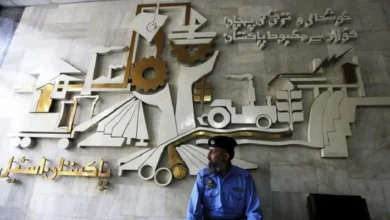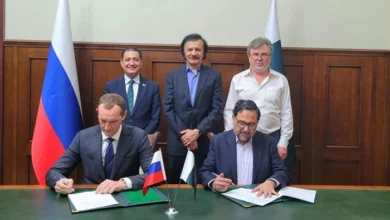ISLAMABAD: After imposing new taxes on solar panels, the authorities have worked out a new buyback rate for electricity generated by solar users, slashing it to one-third of the base tariff, it was reported on Monday.
Also, under the revised policy, the buyback rate will follow a gross metering mechanism with no provision for net-metering.
“Whatsoever the base tariff is to be in future years, the buyback tariff will be one-third of that, and for FY26, the base tariff has been worked out by the National Electric Power Regulatory Authority (Nepra) at Rs34 per unit and its one third price stands at Rs11.33 per unit,” a senior officials of the Power Division told the publication.
“This is how the electricity consumers who are to install the roof solar panels under new policy based on gross metering will now be able to sell their electricity to the system at Rs11.33 per unit,” he added.
However, this has been decided by the authorities involved in making the new policy after getting inputs from stakeholders on the direction of the prime minister. This may be further fine-tuned when the Power Division soon briefs the prime minister in the federal cabinet meeting on the salient features of the new policy.
“The buyback tariff may increase to Rs13-14 per unit after the summary is put before the cabinet headed by the prime minister”.
Federal Minister Power Division, Sardar Awais Khan Leghari, at a presser on July 10, had said the new summary will have better terms for the reconsideration of the cabinet as consultative process has been completed as per the directions of the cabinet.
Interestingly, the consumers who have already installed solar panels and are connected with grid based on net-metering mechanism would continue to sell their electricity at Rs27 per unit, but the new ones would have to have buyback tariff of Rs11.33 per unit which is to be equal to one-third of the base tariff of electricity of Rs34 per unit applicable from July 1, 2025.
However, the privileged class of the country having the net-metering system would continue to enjoy till the end of their existing contracts, but the new ones would have to sell their solar power to the system at Rs11.33 per unit.
Earlier, the Power Division announced the buyback tariff at Rs10 per unit, but the prime minister intervened and asked the authorities to have a consultation process with the stakeholders.
In a country like Pakistan, consumers who have already installed the solar system on net-meeting and who will have solar panels on their rooftops under the revised policy will be meted out at differential treatment. This may trigger a new controversy for the government. Such practice is already being done in the gas sector with differential treatment.
Those who want new gas connections are being provided at the RLNG tariff and those who have already connected with gas supplies are getting their bills as per slab categories.
The Power Division sources said that the Power Division has set a target of induction of 8,500 MW electricity to the system through new solar policy during the upcoming IGCEP (Indicative Generation Capacity Expansion Plan) which is to be approved by the Nepra.
This figure will be part of the new summary to be presented to the cabinet with a new set of regulations and revised buyback rates. Currently, 6,500 MW has already been added to the system through net metering.
The net-metering system has caused a burden of Rs103 billion on electricity consumers using the grid electricity only and in the last year, the system passed Re0.90 per unit to the grid electricity consumers. This is the main reason that gross-metering would replace net metering at the buyback rate of the price equal to one-third of the base tariff.
The main difference between net metering and gross metering lies in how the electricity you generate and consume is measured and compensated. Under net metering, one is billed only for the net energy used (i.e., energy consumed minus energy generated).
If one’s solar system produces more electricity than one consumes, the excess is sent to the grid and credited. If one consumes more than one generates, one pays for the difference.
Under the gross-metering mechanism, one is paid for all the electricity one generates, and one pays for all the electricity one consumes. It works like all solar power generated is exported to the grid. One buys back all the electricity one needs from the grid and two separate meters are installed — one for generation, one for consumption.







